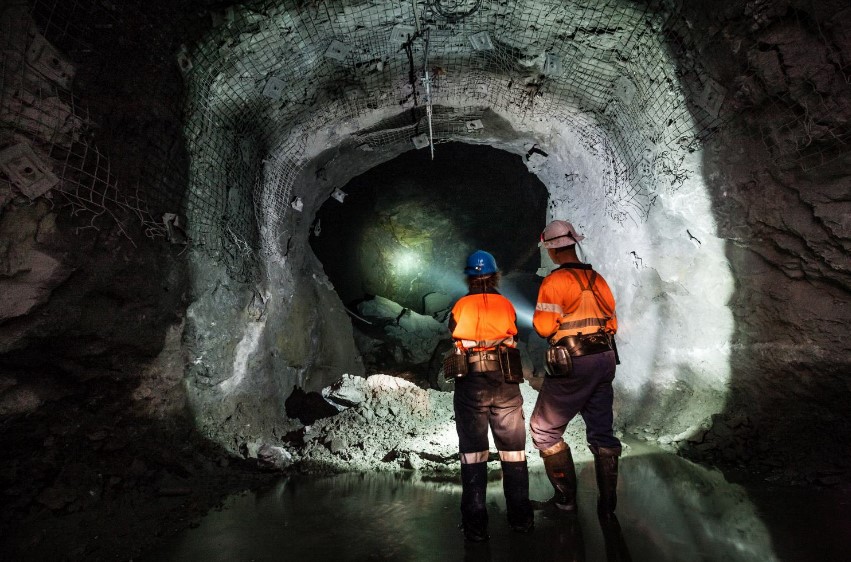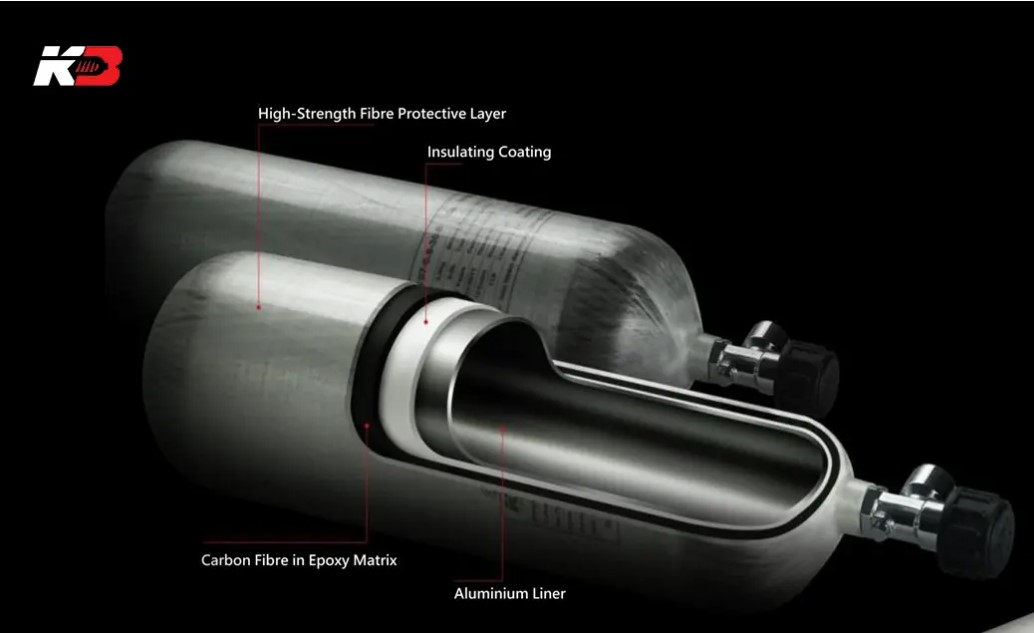In the face of danger and disaster, rescue operations are vital missions that aim to save lives and provide assistance to individuals in distress. These operations can take place in a myriad of environments, from bustling urban centers affected by natural disasters to remote wilderness areas where adventurers may find themselves in peril. Whether it’s navigating through the aftermath of an earthquake or performing a mountain rescue, the primary objective remains the same: to locate, stabilize, and evacuate individuals to a safe environment while minimizing harm and ensuring their well-being.
With evolving technology and methodologies, the efficiency and effectiveness of rescue operations have increased significantly, allowing teams to respond more quickly and with greater precision. Among the critical advancements in rescue equipment is the integration of carbon fiber cylinders, which provide essential support in maintaining breathable air in challenging environments.
An Overview of Rescue Operations
Rescue operations can be broadly categorized into different types, each requiring a distinct set of skills, equipment, and knowledge. The diversity of these operations often dictates the strategies and tactics used to carry them out successfully. Here are some key categories of rescue missions:
Urban Search and Rescue (USAR)
Urban search and rescue operations are critical in the aftermath of catastrophes such as earthquakes, bombings, or other events that lead to structural collapses. These operations require specialized knowledge of building structures, debris removal, and victim extrication techniques. Teams often work closely with engineers and utilize advanced technology, such as drones and sonar devices, to locate and rescue individuals trapped under rubble.
Mountain Rescue
Mountain rescue operations are essential for saving climbers, hikers, and adventurers who encounter difficulties in high-altitude terrains. These missions often involve challenging weather conditions, treacherous landscapes, and limited access. Rescuers in these scenarios need to be equipped with climbing gear, thermal imaging, and advanced navigation tools to locate and safely evacuate individuals.
Cave and Water Rescue
Cave rescues involve navigating through dark, confined, and often flooded passages to reach individuals who are trapped or lost. Similarly, water rescue operations are carried out in oceans, rivers, and lakes to assist swimmers, boaters, and individuals caught in floods. Both types of rescues demand specialized skills, such as diving and spelunking, and require equipment that is reliable in wet and enclosed environments.
Wilderness and Remote Area Rescue
Rescuing individuals from remote areas or wilderness settings poses unique challenges due to the lack of infrastructure and communication networks. Teams must be proficient in wilderness survival skills, navigation, and first aid, as well as be prepared to operate independently for extended periods.
Core Considerations for Rescue Teams
Safety is the paramount concern for any rescue operation. Rescuers must conduct continuous risk assessments and implement strategies that mitigate potential hazards without compromising the safety of the team or the individuals they are assisting.
Risk Assessment and Management
Before initiating a rescue, teams evaluate the potential dangers, such as unstable structures, hazardous materials, or adverse weather conditions. They develop action plans that prioritize the safety of all parties involved and adapt to evolving situations.
Effective Communication
Clear and effective communication is crucial for the success of rescue operations. It enables coordination among team members, facilitates information sharing with other emergency services, and ensures that the rescue strategy is executed smoothly. Rescue teams often employ sophisticated communication devices, such as radios and satellite phones, to maintain contact in challenging environments.
Coordination with Emergency Services
Collaborating with other emergency services, such as fire departments, medical teams, and law enforcement, ensures a comprehensive response to incidents. This multi-agency approach allows for the pooling of resources and expertise, resulting in more efficient and effective rescue efforts.
Training and Preparation for Rescue Missions
Preparation is the cornerstone of successful rescue operations. Teams undergo rigorous training to hone their skills and prepare for the diverse challenges they may encounter in the field.
Specialized Training Programs
Rescue personnel participate in specialized training programs that cover a range of topics, from technical rescue techniques and first aid to advanced navigation and survival skills. These programs often include simulated rescue scenarios that replicate real-life situations, enabling teams to practice their responses and refine their techniques.
Continuous Skill Development
Regular drills and simulations are essential for keeping rescue teams’ skills sharp and ensuring they remain ready for deployment at a moment’s notice. This ongoing training helps teams stay updated with the latest rescue technologies and methodologies, ensuring they are equipped to handle the complexities of modern rescue operations.
Essential Gear for Rescue Operations
The equipment required for rescue missions varies depending on the environment and nature of the incident. However, certain gear is universally recognized as essential for effective operations.
Personal Protective Equipment (PPE)
PPE, such as helmets, gloves, protective clothing, and boots, provides essential protection for rescuers, safeguarding them against injuries and environmental hazards.
Navigation and Communication Tools
GPS devices, maps, compasses, and communication equipment are indispensable for locating individuals and maintaining contact with team members and other emergency services.
First Aid Kits and Medical Supplies
First aid kits equipped with bandages, splints, and medical supplies are crucial for providing immediate care to injured individuals until they can receive professional medical attention.
Technical Rescue Equipment
Ropes, harnesses, stretchers, and other technical rescue gear are essential for operations that involve climbing, lifting, or transporting individuals from difficult-to-reach locations.
The Importance of Carbon Fiber Cylinders
A critical component of many rescue operations is the carbon fiber cylinder, which serves as a reliable source of breathable air in environments where air quality is compromised. These lightweight and durable cylinders have become an indispensable tool for rescuers working in hazardous conditions, such as smoke-filled buildings, areas with toxic gases, or regions with low oxygen levels.
Advantages of Carbon Fiber Cylinders
Lightweight Design: The advanced carbon fiber construction of these cylinders significantly reduces their weight compared to traditional steel counterparts, enhancing the mobility and endurance of rescue teams. This lightweight design is particularly beneficial in challenging terrains where every extra pound counts.
Durability and Longevity: Carbon fiber cylinders are known for their robustness and resistance to extreme conditions, ensuring they withstand the rigors of rescue operations. Their extended service life, often lasting up to 15 years, makes them a cost-effective solution for rescue organizations.
Improved Performance: The reduced weight of carbon fiber cylinders allows rescuers to carry more essential gear, enhancing their overall performance and capability in critical situations.
Extended Air Supply: These cylinders can store larger volumes of air, providing rescuers with a longer operating window in environments where air supply is limited or compromised.
Insights for Outdoor Enthusiasts
For those who enjoy exploring the great outdoors, understanding the basics of rescue operations and the role of equipment like carbon fiber cylinders can be life-saving. Here are a few key insights for adventurers:
Preparation and Planning
Being prepared is crucial for outdoor enthusiasts. This includes understanding the potential risks associated with activities and having a well-thought-out plan for emergencies. Carrying the right equipment and knowing how to use it is essential for safety.
Importance of Rescue Equipment
Investing in high-quality gear, such as portable carbon fiber cylinders, can make a significant difference in emergency situations. These cylinders provide a critical supply of clean air, which can be life-saving in scenarios such as cave-ins, forest fires, or high-altitude challenges.
Education and Skills Training
Learning wilderness first aid, navigation, and survival skills is highly recommended for individuals venturing into remote or challenging environments. These skills empower adventurers to handle emergencies effectively and assist rescue teams if needed.
Conclusion
Rescue operations play a pivotal role in saving lives and mitigating the impact of disasters and accidents. The success of these missions hinges on the skill, preparation, and equipment of the rescue teams involved. Carbon fiber cylinders represent a significant advancement in rescue technology, offering lightweight, durable solutions for air supply in critical situations. As technology continues to evolve, these cylinders will undoubtedly play an increasingly important role in ensuring the safety and effectiveness of rescue operations worldwide.
By incorporating innovative materials and cutting-edge technology, rescue teams are better equipped than ever to respond to emergencies and protect lives, ensuring that no matter the challenge, help is always on the way.
Post time: Jul-25-2024



